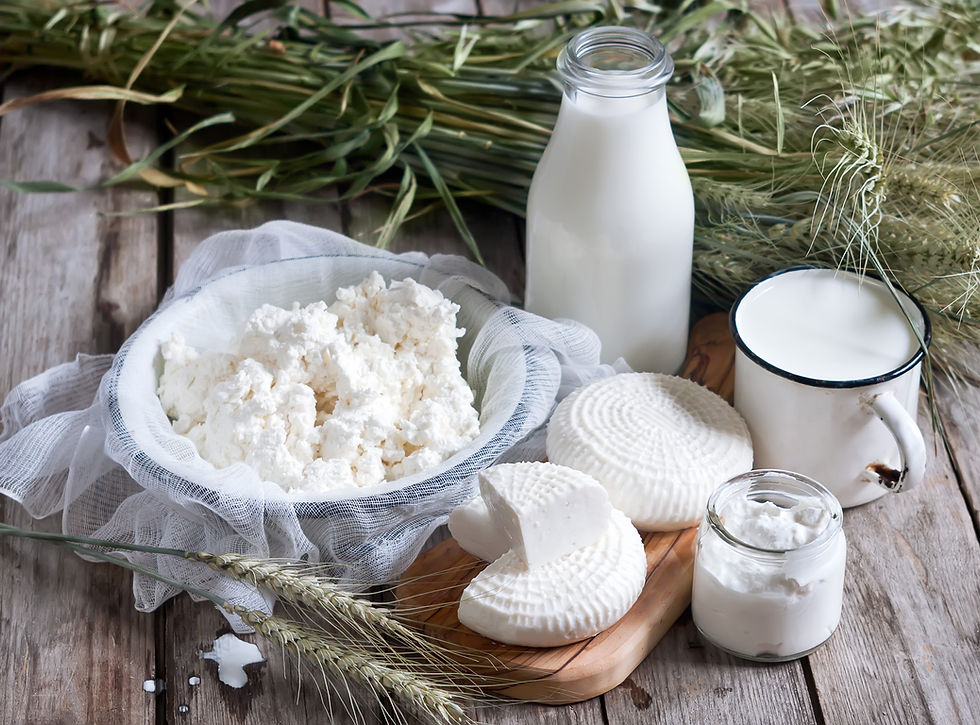Something's in the Whey
- Bowen

- Jun 18
- 2 min read
Protein powder has gained immense popularity within the past decade. Coming in all different shapes, sizes, and strange flavors (like cotton candy), one type continues to stand out: whey. With years of research backing its safety and a surplus of outstanding reviews, whey remains one of the most effective nutritional supplements in the world.
Do you know the whey?
What is whey exactly? Strangely, the powder is a natural byproduct of cheese-making. When milk is curdled during cheese production, the milky liquid that separates from the curds is called “whey.” It is then processed into several forms, the most common being concentrate, isolate, and hydrolysate. Each one offers different levels of purity and absorption, fulfilling different needs for athletes across the board (Medpark Hospital, 2023). Its effectiveness and quality make it one staple in sports nutrition.

How is whey so effective?
Whey is special due to its comprehensive amino acid profile. The supplement contains all nine essential amino acids that the body can’t produce much of. The amino acids serve as the brick-and-mortar for the protein synthesis in your body. Even better, according to the International Society of Sports Nutrition, whey can be quickly absorbed after ingestion (Jäger et al., JISSN, 2017). This rapid digestion makes it ideal for all situations, from a post-workout snack to a full meal.

Be mindful of what you put in your body!
Still, whey is not for everyone. Although whey isolate typically contains less lactose than whey concentrate, people with dairy allergies or lactose intolerance can experience discomfort. There are also risks when choosing which brands to take. The FDA labels whey protein powder as a dietary supplement, so there is no requirement for official safety evaluations. The lack of evaluations allows some brands to cheat out high-quality ingredients for chemicals and cheap materials to gain a larger profit margin. (Harvard Health Publishing, 2018).

Key takeaways
Before taking any supplement, it is always important to consider what your body needs first. Whether you’re looking for recovery from a hard day of training or a tasty meal that keeps you full, with careful selection, you can’t go wrong with a scoop or two of high-quality whey protein powder.
References
The hidden dangers of protein powders. Harvard Health. (2022, August 15). https://www.health.harvard.edu/staying-healthy/the-hidden-dangers-of-protein-powders
Jäger, R., Kerksick, C. M., Campbell, B. I., Cribb, P. J., Wells, S. D., Skwiat, T. M., Purpura, M., Ziegenfuss, T. N., Ferrando, A. A., Arent, S. M., Smith-Ryan, A. E., Stout, J. R., Arciero, P. J., Ormsbee, M. J., Taylor, L. W., Wilborn, C. D., Kalman, D. S., Kreider, R. B., Willoughby, D. S., … Antonio, J. (2017). International Society of Sports Nutrition Position Stand: Protein and exercise. Journal of the International Society of Sports Nutrition, 14(1), 20. https://doi.org/10.1186/s12970-017-0177-8
Whey protein - types, benefits, why should I take it?. MedPark Hospital. (2024, September 20). https://www.medparkhospital.com/en-US/lifestyles/whey-protein
_edited.png)



Comments